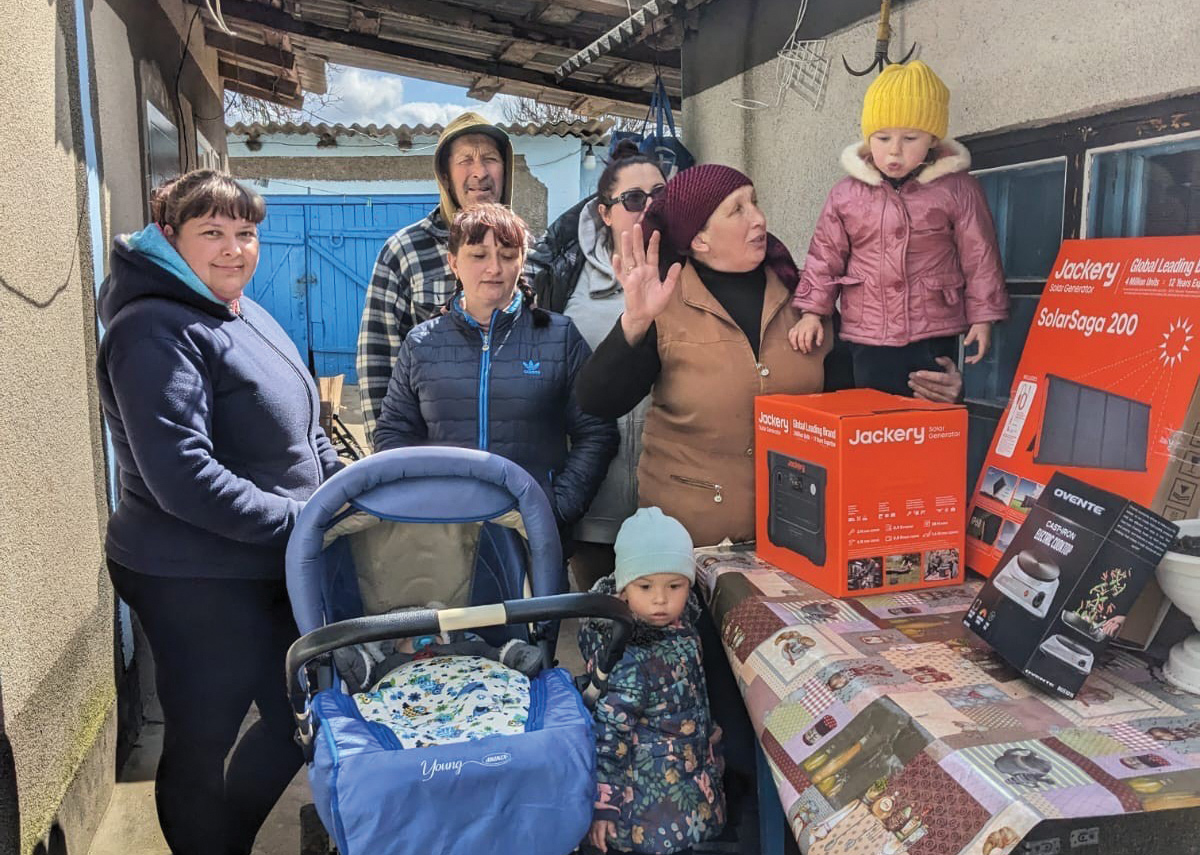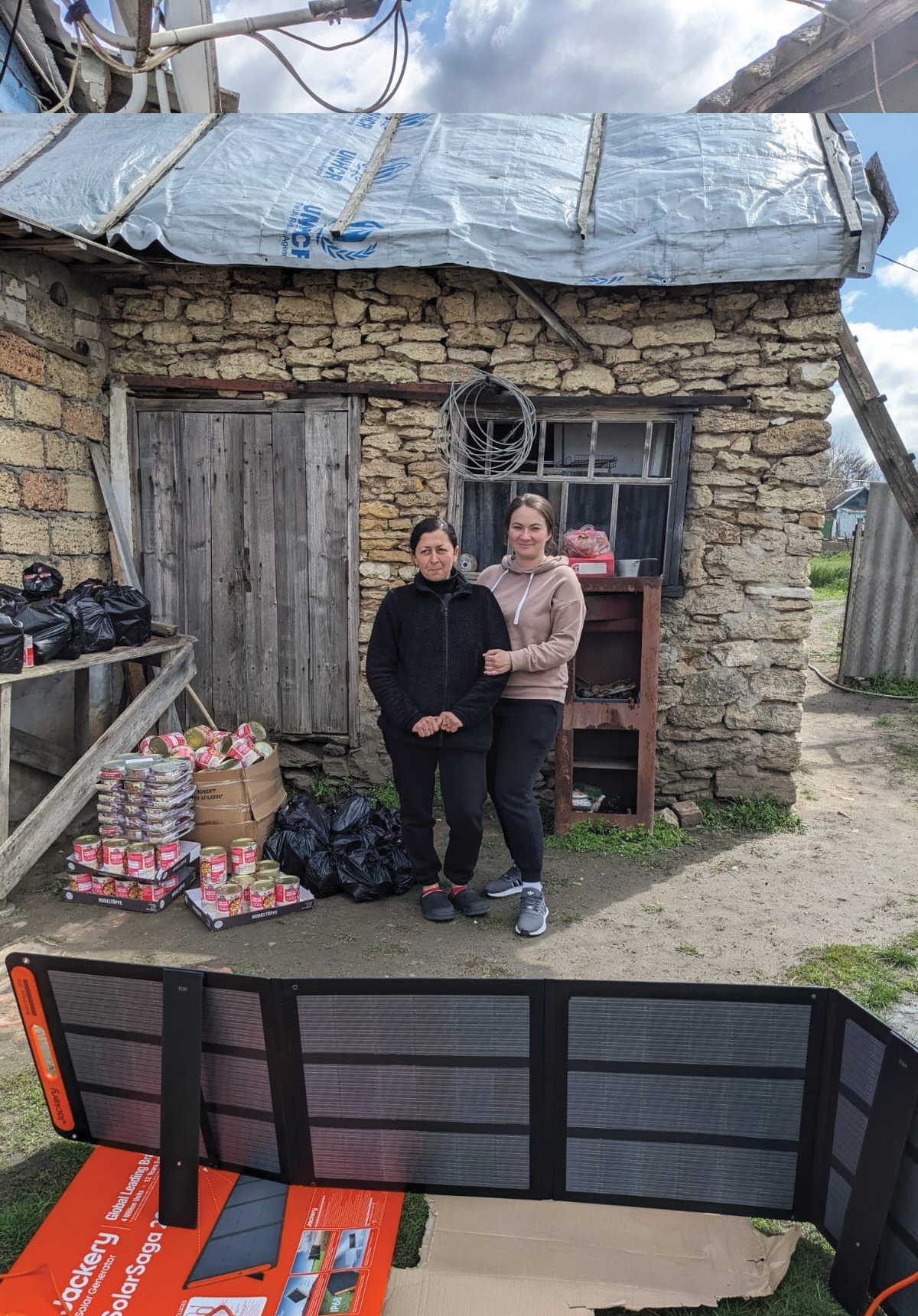By Yuriy Boyechko September 30, 2025

A Ukrainian family and their children are some of the first to receive Solar Resilience Kits. © Hope for Ukraine
In war-torn Ukraine, where drone attacks have become a daily threat and infrastructure lies in ruins, survival now hinges on more than just food and shelter—it hinges on access to power.
As electricity grids are crippled by conflict and public utilities are rendered unreliable or entirely destroyed, the need for off-grid, secure energy sources has never been more urgent. Amid this backdrop, solar energy is emerging not just as an environmentally friendly solution, but as a literal life-saving force on the front lines.
The Crisis of Energy Insecurity
Since Russia’s invasion of Ukraine in 2022, millions of civilians—particularly in the eastern and southern regions—have been forced to adapt to life without consistent access to electricity, heat, or water.
Entire communities in areas such as Sumy, Dnipro, Zaporizhia, and Kherson face daily hardships as infrastructure collapses under the pressure of war. Families often resort to burning firewood to prepare meals and stay warm, risking not only their health but their safety.
In many frontline zones, smoke from these fires can attract Russian drones that use visible indicators to locate
and strike targets. Even the simple act of cooking has become a dangerous signal in a war where anything revealing human presence can be used against civilians.
This ongoing threat has created a unique and urgent need for power that is not only clean and off-grid, but discreet. It’s in this dangerous and evolving context that the solar industry— traditionally seen as a tool for sustainable development—has found a powerful new role.
A Humanitarian Innovation Rooted in Solar
To meet this need, humanitarian organization Hope for Ukraine has launched the Solar Energy Resilience Program, an initiative designed to bring sustainable power directly to civilians living under the threat of war. The program distributes portable solar kits that include a 200-watt solar panel and a smoke-free electric stovetop. These kits offer a safe, reliable way for families to cook meals, charge phones, power lights, and keep small devices operational—critical needs in areas cut off from centralized resources.

A mother and daughter stand next to the solar panel provided with the Solar Resilience kits. © Hope for Ukraine
Each solar panel charges fully in about eight hours and generates enough energy to power a household’s most essential needs. More importantly, the electric cooktops included in the kits allow families to prepare warm meals without generating smoke, reducing the risk of detection by enemy forces.
So far, the program has delivered 80 kits to households in high-risk zones, with a goal of delivering at least 220 more by the end of 2025. The need is overwhelming—over 10,000 families are currently on the waiting list for one of these life-saving kits.
A New Model for Humanitarian Aid
Traditionally, humanitarian organizations have focused on short-term emergency aid—delivering food, water, blankets, and medicine. While this kind of support is essential in the immediate aftermath of disasters, it often lacks the infrastructure to help communities rebuild or adapt to long-term crises. Hope for Ukraine’s Solar Energy Resilience Program is helping to change that.
By shifting from short-term relief to long-term resilience, the program is setting a new precedent. Solar kits don’t just offer power—they restore autonomy. Families can prepare their own food, heat their homes, and keep their children engaged in remote learning with charged laptops. In doing so, they reclaim a sense of control and dignity in a landscape otherwise defined by instability and fear.
Other aid organizations are beginning to take notice. The success of Hope for Ukraine’s initiative is inspiring conversations around how renewable energy technologies can be deployed in other conflict zones. Solar power offers an inherently resilient form of energy that doesn’t rely on fragile infrastructure—making it an ideal solution for humanitarian aid in volatile regions.
Lighting the Path Forward
Through the Solar Energy Resilience Program, Hope for Ukraine is offering more than aid; it’s offering a path toward stability and safety. By leveraging renewable energy, the organization is proving that humanitarian innovation can deliver immediate relief while also building a foundation for recovery and resilience.
As Ukraine continues to endure the profound toll of war, programs like this demonstrate that even in the darkest of times, there are ways to bring light—literally and figuratively—to those who need it most.
About the Author
Yuriy Boyechko is a Founder and President of Hope For Ukraine Inc, a non-profit that serves individuals and families of the poorest communities in the Ukraine. After graduating from Regent University in 2005 with an MA in Media Communication, he has been involved in the media and entertainment industry ever since. In 2016, Hope For Ukraine was founded. His goal is to raise awareness for voices not heard in Ukraine, especially children affected by HIV and AIDS. Providing medical care for children with disabilities as well as food and clothing for families that live in extreme poverty is a lifetime commitment for Yuriy and his wife Tatyana.



